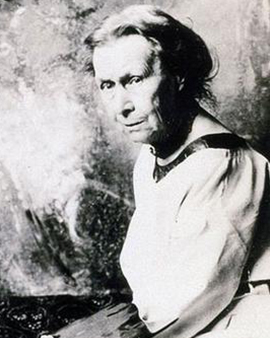On a misty morning in Manchester, Annie Louisa Swynnerton sits in her sunlit studio, sketching the delicate features of a young woman. Born in 1844, Swynnerton grew up in an era when women artists were rarely acknowledged. Undeterred, she pursued her passion, studying at the Manchester School of Art and later in Paris, where she absorbed the influences of Impressionism. Her paintings are marked by a remarkable freshness and luminosity, blending subtle, often poetic visual language with bold technique. Swynnerton was among the first women admitted to the Royal Academy of Arts - a milestone that reflects her tireless advocacy for the recognition of female artists.
Her oeuvre is distinguished by portraits of strong, self-assured women, as well as evocative landscapes and allegorical scenes. Especially notable are her depictions of female figures, imbued with dignity and strength, making her a significant figure in British Impressionism. Swynnerton experimented with light and color, her brushwork vibrant and energetic. She was also politically active, supporting women's suffrage and frequently addressing themes of identity and self-determination in her art. Her works were exhibited across Europe and widely acclaimed, not least for her ability to make the invisible visible - the inner strength and beauty of her subjects. Swynnerton's influence extends far beyond her lifetime; she inspired countless women artists and remains a symbol of artistic and social emancipation.
×





.jpg)
.jpg)
.jpg)
.jpg)
.jpg)
.jpg)
.jpg)
.jpg)
.jpg)
.jpg)
_Peinture_de_Annie_Louisa_Swynnerton_(1844-19_-_(MeisterDrucke-1642118).jpg)
_Peinture_de_Annie_Louisa_Swynnerton_(1844-19_-_(MeisterDrucke-1642118).jpg)
.jpg)
.jpg)
.jpg)
.jpg)
_c1844-1933_(oil_on_canvas)_-_(MeisterDrucke-1484353).jpg)
_c1844-1933_(oil_on_canvas)_-_(MeisterDrucke-1484353).jpg)
.jpg)
.jpg)
.jpg)
.jpg)
_-_(MeisterDrucke-1466078).jpg)
_-_(MeisterDrucke-1466078).jpg)
_-_(MeisterDrucke-1465920).jpg)
_-_(MeisterDrucke-1465920).jpg)
.jpg)
.jpg)
.jpg)
.jpg)
.jpg)
.jpg)
.jpg)
.jpg)
.jpg)
.jpg)
.jpg)
.jpg)
_-_(MeisterDrucke-1466022).jpg)
_-_(MeisterDrucke-1466022).jpg)
_-_(MeisterDrucke-1466086).jpg)
_-_(MeisterDrucke-1466086).jpg)
.jpg)
.jpg)
.jpg)
.jpg)
.jpg)
.jpg)
.jpg)
.jpg)
.jpg)
.jpg)
.jpg)
.jpg)






